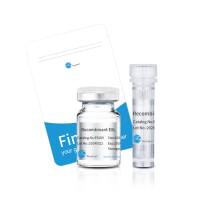Assays for the Repair of Oxidative Damage by Formamidopyrimidine Glycosylase (Fpg) and 8-)Oxoguanine DNA Glycosylase (OGG-1)
互联网
互联网
相关产品推荐

ALKBH2/ALKBH2蛋白Recombinant Human DNA oxidative demethylase ALKBH2 (ALKBH2)重组蛋白Alkylated DNA repair protein alkB homolog 2 Alpha-ketoglutarate-dependent dioxygenase alkB homolog 2 Oxy DC1蛋白
¥1344

NEIL1/NEIL1蛋白Recombinant Human Endonuclease 8-like 1 (NEIL1)重组蛋白DNA glycosylase/AP lyase Neil1DNA-(apurinic or apyrimidinic site) lyase Neil1Endonuclease VIII-like 1FPG1Nei homolog 1 ;NEH1Nei-like protein 1蛋白
¥1344

Recombinant Mouse Ogg1/小鼠Ogg1蛋白
¥2870

WIP (Lysis Buffer for WB/IP Assays, Nondenaturing)(C-0013)-30ml/60ml/100ml
¥70

1 kb DNA分子量标准
¥100

